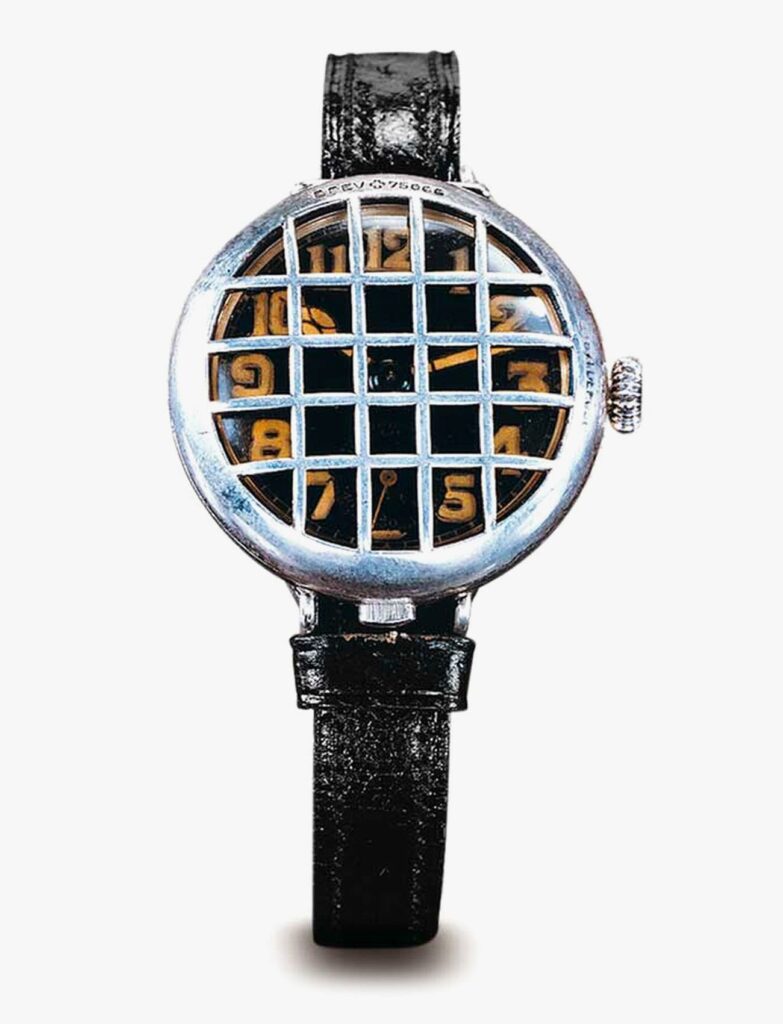Watch and Clock Repair Blog
It’s been said that men have always interacted, with trends, at a much slower pace than women. While women control the world’s buying power – many report around 80% of it, there are apparel, style-conscious men willing to put down money on certain items, like watches – however, men have typically gravitated towards what they know and are comfortable with. While women are offered a myriad of wrist decorations to choose from, the watch has been the staple accessory that a man wears every day. And no, it wasn’t always that way.
The earliest example of a timekeeping device worn on a person’s arm was a gift – a ruby and diamond bracelet with a clock set in the clasp, given to England’s Queen Elizabeth I, in 1571, by Robert Dudley – an English statesman and suitor to the Queen’s hand for many years as he was her from her accession until his death.
The making of these small clocks gained popularity and continued into the early 1800s with master clock makers, that designed watches and mechanical calendars for wealthy women, like Patek Phillipe and Abraham Louis Breguet – today, known as 2 of the big 3 watch brands in the world. (The other being Vacheron Constantin) Together, they form what’s now referred to as ‘The Holy Trinity of Watches’.
As the 19th century marched on, watches became much less expensive to produce and therefore own. Eventually, the masses got involved and pocket watches became the norm. Gentleman carried them around in their jackets. Women didn’t wear pocket watches – they were typically large in size and only fit in a jacket pocket, which women didn’t wear. At the time, men considered wrist watches to be inferior to pocket watches, claiming that they were prone to damage and rust and that the mechanics of the watch were too small to keep accurate time.
Things started to change as the value of coordinated military maneuvers became apparent, and with that, wristwatches’ popularity increased. However, these are still pocket watches, and many soldiers were beginning to find that it was difficult to check the time on a pocket watch while controlling a horse or holding a rifle. Just before the turn of the century there were patents filed for a type of leather strap with a cupped area in the center designed to hold a pocket watch in place around a person’s wrist—which is still technically not a wrist watch—but it’s a pocket watch that you have on your wrist.
As the leather pocket watch holder gained popularity among military men and to a lesser, but notable, extent – civilian women, it became known as the campaign watch. The campaign watch saw extensive use in the second Boer war which was fought between the British and the descendants of Dutch settlers in South Africa, known as the Boers. The Boers were used to hunting and riding in their local terrain and their evasive tactics forced the British officers to coordinate perfectly timed attacks to gain the element of surprise. Pocket watches at this time attained a very high quality for a relatively low cost. Remember that these are still pocket watches that are worn on the wrist, and not wrist watches. Men still considered watches to be feminine, and when they returned to civilian life, they put their watches back where they belonged—safe in a waistcoat pocket.
During World War I, trench warfare made coordinated troop movements the focus of combat and British generals gave orders from locations far from the front lines. The timing and clarity of orders was essential to the success of operations. A tactic called ‘a creeping barrage’ required a group of infantry men to advance just behind successively farther-reaching rounds of artillery. Careful timing was a matter of life and death, and it became more important for every soldier to have a watch that they could read quickly and easily.

Near the end of the war, purpose-built wrist watches with lugs for attaching leather straps called ‘service watches’ were beginning to be advertised and manufactured. Many of the English watchmakers were not prepared to switch from manufacturing pocket watches and began to struggle and wither. Swiss manufacturers that had been making smaller movements found it easier to transition to the smaller wrist watches and overshadowed the British watch making industry. The metal reinforced ‘trench watch’ was developed, as well, to give soldiers a sturdier timepiece. These were often made with shatter resistant glass, or a shrapnel guard, which was a metal cage that protected the face of the watch but still allowed the time to be read. A reliable watch worn on the wrist became a necessity for officers and a useful tool for every soldier. Though they were still expected to provide their own. – the wrist watch had become a masculine tool essential to the soldier and popular with the manly civilian.
American soldiers, however, were surprised to see the British troops wearing the effeminate wristwatches, which was not a foreign concept, but certainly an unpopular thing for men to do, in America at the time. None the less, the American soldiers were soon converted and gradually spread the practice back home to America. Pocket watches were still being used into the 1920s.
The roaring twenties, in a sense, with their new and less-inhibited lifestyle, was the first real decade of the wristwatch as both men and women started to adapt wristwatches over pocket watches.

